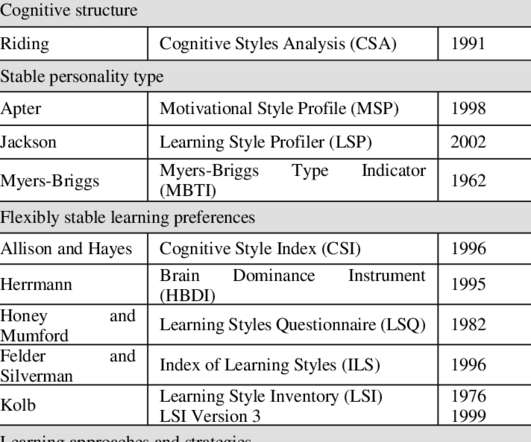Evaluating Your eLearning
eFront
JULY 21, 2015
de Freitas & Oliver 2006, p.262). Pedagogic principles require the trainer to integrate learning models and theories in order to design effective eLearning programs. References. How can exploratory learning with games and simulations within the curriculum be most effectively evaluated? de Freitas, S., & Oliver, M.,












































Let's personalize your content